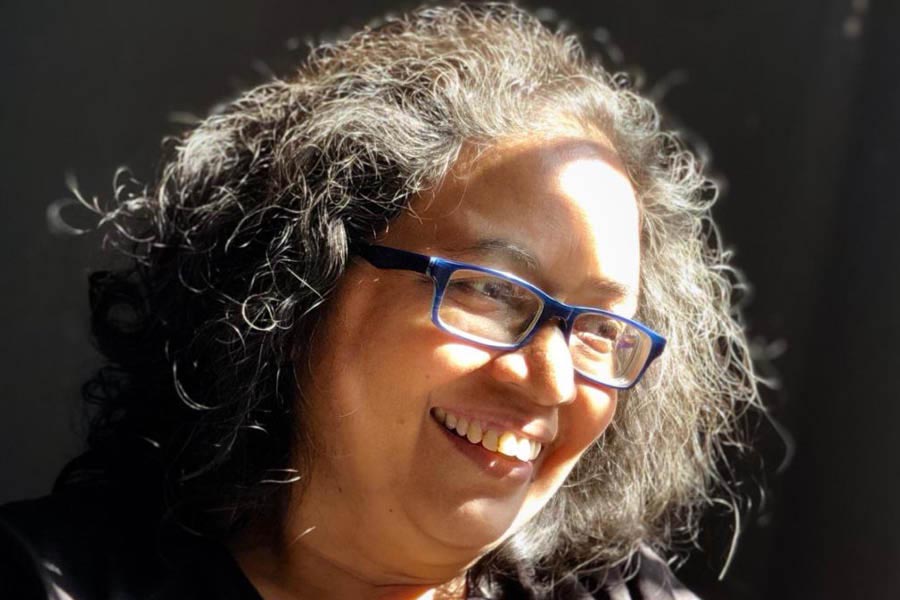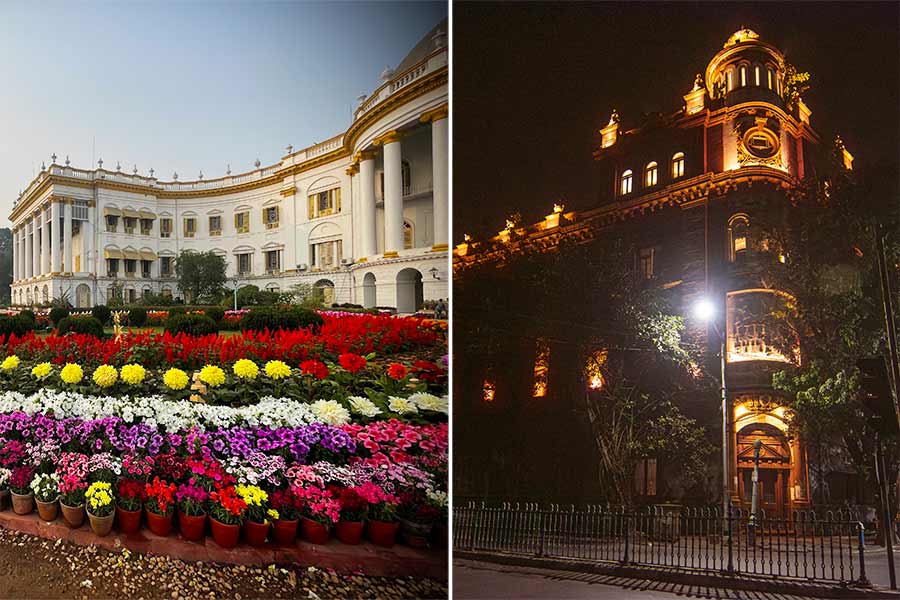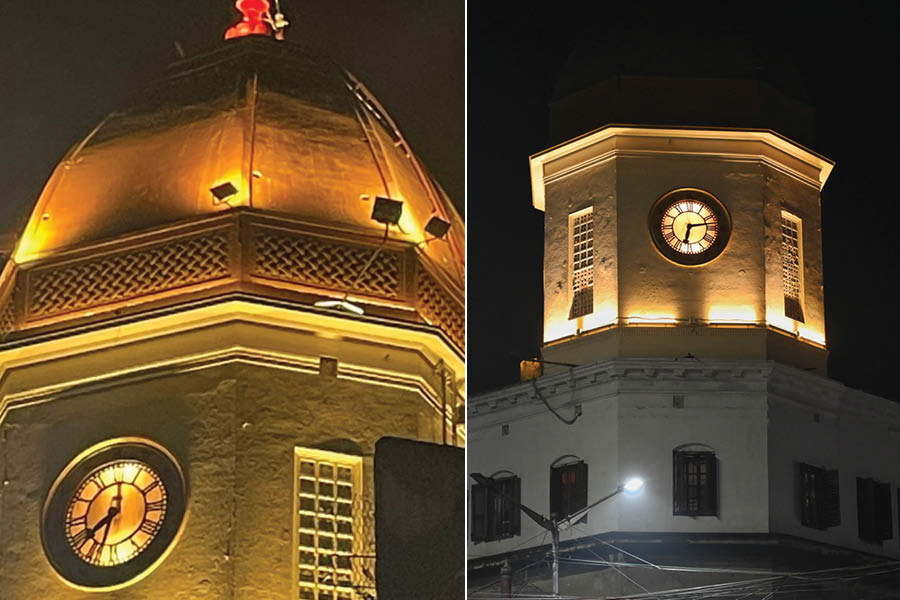“I’m 60 but still not sure of how I want to be perceived.”
This is the first thing Neeta Das says, when My Kolkata catches up with her at Loudoun Mansion, a building near Minto Park she helped restore in 2019.
In a career in architecture spanning close to four decades, Neeta has given a new lease of life to structures like La Martiniere College, Lucknow; Royal Calcutta Turf Club; Krishna Mandir, Nepal, and Scottish Cemetery, Kolkata. She has also written multiple books on architecture and restoration, and was recently felicitated by the Calcutta Heritage Collective for her work in conservation. But more than bricks and mortar, Neeta’s story is about unlearning prejudices and breaking glass ceilings.
Unlearning prejudices
Neeta was one of three sisters in a Marwari family. She grew up in 1960s Kanpur, with her parents always emphasising the need to study to free oneself from the evil of dowry and bad marriages. She never had to dress up in a traditionally feminine way, or enter a kitchen as a child. “When someone asked me who I was, I would say, ‘a man’,” she chuckles.
As a student of St Mary’s Convent High School, Kanpur, Neeta grew up with a Westernised mindset. This perspective was reinforced when she did her graduation in architecture from Centre for Environmental Planning and Technology (CEPT), Ahmedabad. “Because of my education, I saw architecture through the aesthetics of Paris, London, and Dubai. These cities appeared on our TV screens every day, and everyone’s aspirations were tailored according to them. But how can we aspire to be someone else, without looking at what we already have? When I began working as an architect in India, all these notions went out of the window,” she says.
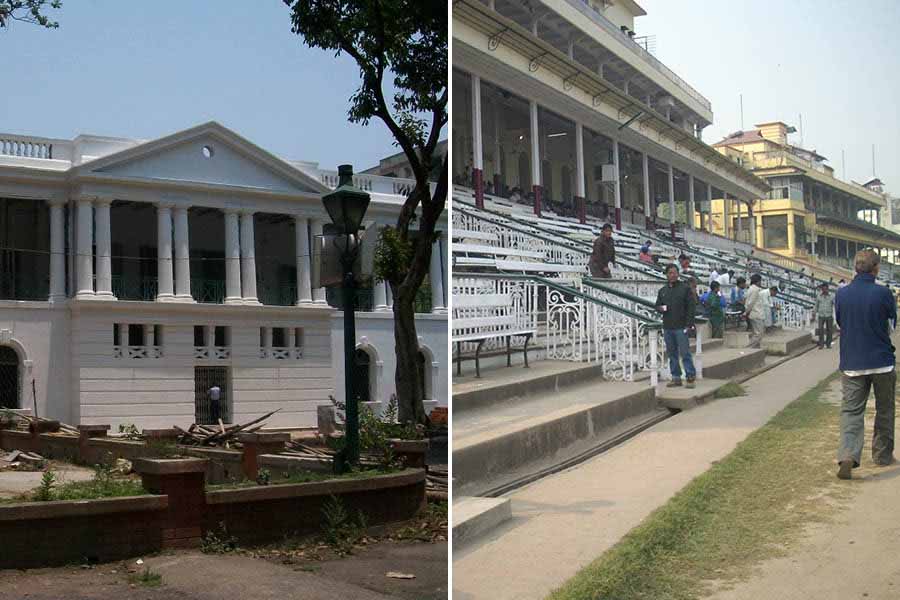
Neeta’s first restoration project in Kolkata was at the legendary Royal Calcutta Turf Club.
Neeta started her career in Lucknow and was instantly fascinated by the ‘Nawabon ka Shahar’. However, she noticed another fallacy of her western education, which had dismissed the city in one line for having ‘bastard-style architecture’. “I began to question what made this architecture, ‘bastard-style’. I noticed how, for something pure, there is something impure. German Nazis, men, women, and married heterosexual couples are pure. Black people, lesbians and people of colour like Indians were not so pure. A hierarchy was set, and I began writing about these concepts to understand them better. Over the course of writing my books, I realised that life isn’t about judgement but understanding.” Apart from writing a series of books on the city’s architecture, Neeta not only set up a successful architectural practice, but also rose through the ranks to become the director of Babu Banarasi Das (BBD) University, Lucknow.
Many of Neeta’s projects are funded by ‘first world’ countries, and dealing with international clients opened her eyes to how different the two worlds were. “I had the highest educational qualification someone could have, from one of the best universities in the world. Even after I had 25 years of experience, white men would talk down to me during international projects. They would be surprised to know that one could restore buildings in India. I would promptly reply: ‘The Taj Mahal was built in India’,” laughs Neeta. She realised early on to own her Indianness, and be assertive of her identity. “Their templates would never work in India, because of the sheer diversity. As a journalist, you can’t have the same list of predetermined questions to ask Hindu and Muslim women. So how can you restore a building in Kolkata and Paris in the same way?”
Restoring Kolkata
Around 2008, Neeta’s husband got a job at Jadavpur University, and her family moved to Kolkata. She immediately noticed more opportunities for restoration in the city. However, this wasn’t her first tryst with the City of Joy. Over the course of her life, Neeta has seen three Kolkatas. “The first was my extended family, who showed me a city that only had Flurys as a tourist-worthy spot, would go to Tolly Club, only ate vegetarian food, and looked down upon Bengalis. My husband being a Bengali, I visited his family after marriage, and saw a middle-class Bengali Kolkata in the narrow lanes and tiny homes of Barasat, where a lot of fish was consumed. The third Kolkata was the one I saw as a professional, where I tried balancing the two distinct perspectives.”
Having broken glass ceilings all her professional life, Neeta also knew that she wanted to bring a change through her work, restoring structures that matter. Her first restoration project in Kolkata were the hallowed stands of RCTC.
That started a cascading cycle of restoring prestigious structures not just in India but abroad too. Some of her prized projects include the Mulagandha Kuti Vihara in Sarnath and Chilkapet House in Almora. Closer home, she even did the assessment of the popular Rajbari Bawali on the outskirts of Kolkata.
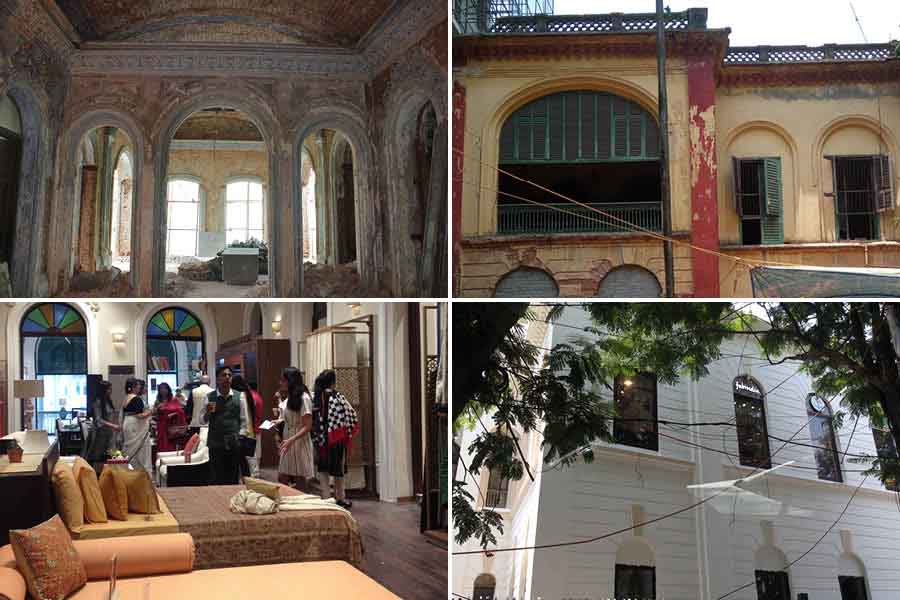
The restoration of the almost ramshackle Loudoun Mansion is among Neeta’s favourite projects.
One of her most challenging projects was the Scottish Cemetery on Karaya Road near Mullickbazar. “As a Hindu, I didn’t know much about it. Father Simmick of St. Andrew's Church said that they wanted to capture the sentiment of Christ putting people at peace. This project taught me how plants, animals, bodies, humans and history, can all coexist sustainably. It made me realise that spaces shouldn’t be exclusive but inclusive,” she smiles.
Loudoun Mansion was equally hard but just as rewarding. When Neeta joined the project, the building was already half-broken. “The Kolkata Municipal Corporation had asked to preserve it since it is one of the only buildings in the city without any steel in its structure. It would have been easy to break but the hard part was to lovingly transform it into something that didn’t just keep it intact but enhanced its beauty. We could have installed a false ceiling here but wanted to keep its high ceiling.” She adds that restoration isn’t just about doing the bare minimum. She emphasises the need to marry technique with aesthetics, adding that it is essential to retain its core. Neeta explains true restoration with a hilarious analogy. “If you broke your nose and replaced it with a steel nose, it wouldn’t look good, right? It’s not just about repairing the damage but reviving its story. If we break down the stands at RCTC and build them from scratch, it will lose its heritage value.”
Why restore?
Apart from preserving heritage, there are several practical reasons for restoration. Neeta enlists climate change as a prominent one. She argues that for any construction, trees are cut, which diminishes green cover while leaving tonnes of birds and insects vulnerable. This is replaced by a curated green space or lawn in the name of aesthetics. “This green space sucks a lot of water and pesticides, disturbing not just our breathing and eating but the entire ecological cycle.” Besides this, demolishing an existing structure and erecting a new one creates a lot of dust while taking up excess resources, and also leaving behind more waste.
Taking down a heritage structure to replace it with a modern skyscraper isn’t always the most logical option for Indian climates either. “These new buildings use a lot of glass, iron and concrete, which isn’t good for air conditioning or climate change. Hence, it makes sense to remodel and restore an old building for new purposes. Unfortunately, we don’t always think before clearing a plot. I’ve spent much of my working life trying to do less, and save more.”
However, this isn’t always easy. Since India is a developing country, conservation isn’t a priority for most people because it costs more and takes more time to maintain. Neeta reinforces the need to not just restore but reuse a space where it can sustain itself financially. When such ideas aren’t conceived, restoration largely remains restricted to the rich, leading to widespread classism. “The first step while restoring a space, is to remove ‘encroachment’. I find it very disturbing that we don’t even call them people. There are designated spots to park two cars but no such space for our workers to live,” Neeta laments. She calls out the hypocrisy of covering up slums when foreign leaders visit, arguing that we want our streets to look clean but our cities have no area allocated to social housing. “A rich person is reliant on multiple people everyday, including drivers, cleaners and gardeners. These are real people, who have homes in the towns and villages that they leave to work in cities, and live in slums here. If we clear these slums, where will they go? We need to redefine our sense of aesthetics from the perspectives of people who come from different socio-economic backgrounds.”
Her work has led to several prestigious awards and life has also come full circle, as she now teaches PhD students at her alma mater, CEPT. She is particularly amused at how Bangla Worldwide awarded her as a Bengali, and feels a great deal of belonging to the culture. “As a Marwari, you realise how to make money. But Bengali culture taught me how to express myself creatively through art. My family would often ask me, ‘Kitna paisa hai kitaabon mein?’ I would reply, ‘I have an author page on Amazon!”
But in the end, she is driven by a love for old buildings. Her romanticism stems from the power to re-imagine a structure’s past glory. “When you notice a half-broken ruin, you stop and try to complete it in your mind. Someone could imagine a tawaif, while someone else spots a nawab. It becomes your story, transporting you back in time.”
